Ultimate Guide to Mechanical Key Management Systems
The Ultimate Guide to Mechanical Key Management Systems
Keys might seem old-fashioned in our digital world, but they’re still the backbone of security for thousands of UK businesses. The trouble is, managing them properly is a right nightmare – ask any facilities manager who’s spent ages hunting for missing keys or wondering who’s got what. That’s where mechanical key management systems come in, offering a straightforward way to keep track of your keys without needing fancy technology or worrying about power cuts.
1. What are mechanical key management systems?
Keys are still the most important part of physical access control for thousands of UK businesses in a world where security is a top priority. But managing these important things is very hard for managers of premises all over the world. From keeping track of hundreds of keys across different departments to stopping unauthorised access and making sure that security protocols are followed.
Mechanical key management systems let you control keys without needing electricity, networks or complicated technology. Mechanical key management systems offer better security through structured processes made just for key control, as well as accountability and traceability. This is in contrast to simpler ways of hanging keys on hooks or keeping them in desk drawers.
We have seen firsthand how good key management changes security operations after 30 years of helping businesses deal with these problems. When D.H. Price Motors cut down on the time it took to find keys from 15 minutes to less than 2 minutes or when Xlusso got rid of lost keys completely, these weren’t just improvements in security; they were changes that changed the way the business worked.
Everything you are about to read is based on our team’s experience setting up mechanical key management systems in a variety of fields, such as automotive, property management, healthcare and manufacturing. If you’re looking into your first key management system or want to improve the ones you already have, you’ll find useful information and advice based on real-world experience to help you make your choice.
“The right mechanical key management system doesn’t just keep your keys safe; it changes the way your whole organisation thinks about physical security without needing complicated technology.” – David Miller, a key management expert with more than 25 years of experience Keys are still the most important part of physical access control for thousands of UK businesses in a world where security is a top priority. But managing these important things is very hard for managers of premises all over the world. From keeping track of hundreds of keys across different departments to stopping unauthorised access and making sure that security protocols are followed.
Mechanical key management systems let you control keys without needing electricity, networks or complicated technology. They offer better security through structured processes made just for key control, as well as accountability and traceability. This is in contrast to simpler ways of hanging keys on hooks or keeping them in desk drawers.
We have seen firsthand how good key management changes security operations after 30 years of helping businesses deal with these problems. When D.H. Price Motors cut down on the time it took to find keys from 15 minutes to less than 2 minutes or when Xlusso got rid of lost keys completely, these weren’t just improvements in security; they were changes that changed the way the business worked.
Everything you are about to read is based on our team’s experience setting up mechanical key management systems in a variety of fields, such as automotive, property management, healthcare and manufacturing. If you’re looking into your first key management system or want to improve the ones you already have, you’ll find useful information and advice based on real-world experience to help you make your choice.
“The right mechanical key management system doesn’t just keep your keys safe; it changes the way your whole organisation thinks about physical security without needing complicated technology.” – David Miller, a key management expert with more than 25 years of experience
2. How do mechanical key management systems work?
Mechanical key management systems work on a simple and very effective idea that doesn’t need electricity, a network connection or complicated technology. These systems are great for places where the power goes out or the heat gets too high.
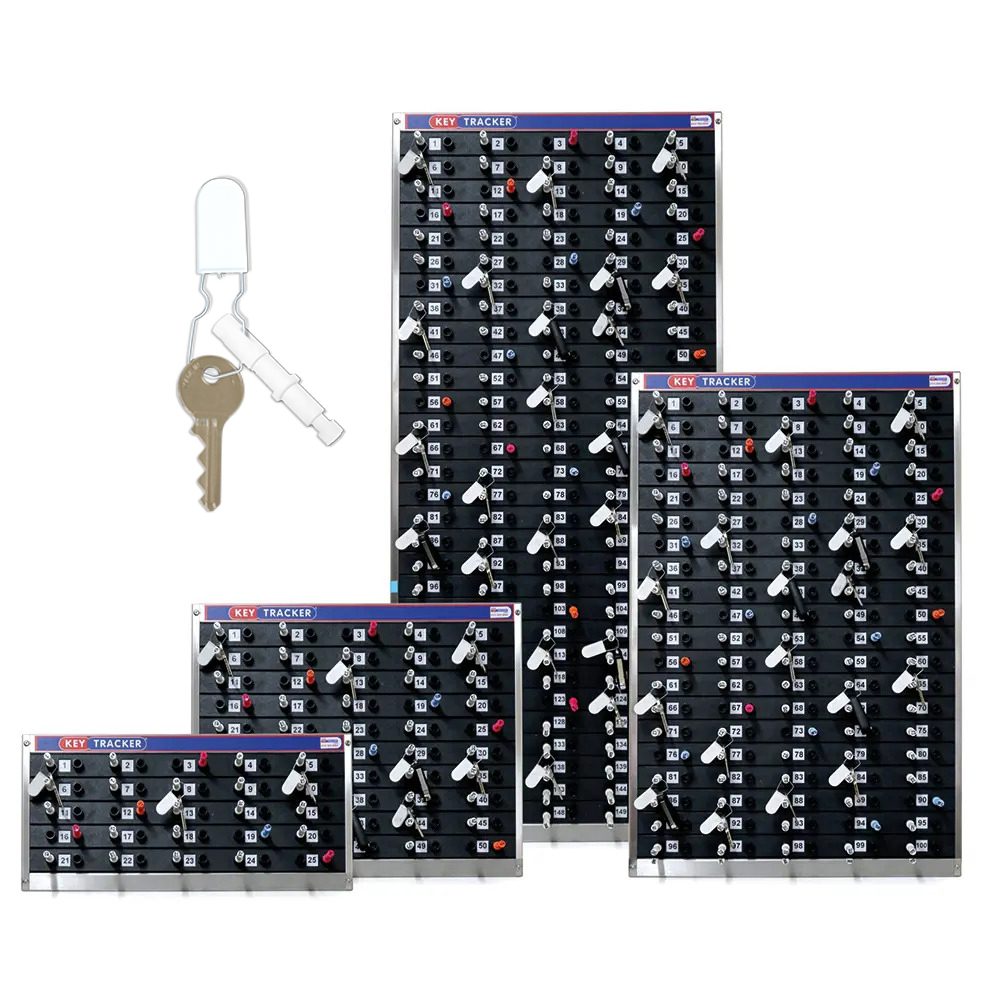 The Peg, In/Peg, Out System
The Peg, In/Peg, Out System
You can’t talk about mechanical key management systems without first looking at the strong “peg, in/peg, out” method. They have been tested over many generations and are still in use today. Here’s how they work:
Main Parts:
Key Panel or Board
A secure panel with numbered spots where keys can be hung safely is the most important part of any good key management system. These strong boards keep everything in order and make sure that each key has its own place. This makes it easy to see at a glance what is available and what has been taken out.
Pegs for Identification
Everyone who needs access gets their own peg with a unique number or colour. These markers are like a personal signature. When someone takes a key, they leave their peg in its place. It’s a simple but useful way to keep track of who has what without any trouble.
Tags for Keys
There is a tag on each key that shows where it goes on the board. These tags are strong and easy to read, so you’ll never have to guess where a key goes. They are made to be handled every day while still being easy to read.
Safe cabinet
You can put the whole system in a lockable cabinet for extra peace of mind. This optional feature adds an extra layer of security, which is especially helpful in busy places or when you need to keep valuable keys safe from people who shouldn’t have them.
Log Sheet by Hand
It’s important to keep track of important movements, whether it’s in a paper logbook or a digital one. This log keeps track of who took which key and when, making a proper audit trail that is very useful for security and general accountability. Assetcontrol.cloud is a perfect partner for this to simplify this process.
The Basic Steps:
It’s easy to set up your key management system and it follows a logical order that keeps everything safe and accountable. First, make sure that each key is properly attached to its numbered tag and placed in the right spot on the board. Also, make sure that every authorised user has their own identification peg with their name, ID number or department information on it.
To get a key, all someone has to do is put their identification peg in the spot where the key was kept, fill out the log sheet with the date, time and reason for taking the key and then take it out to use it. The return process is just as easy: users put the key back where it belongs, get their identification peg and write down the return information on the log sheet. This approach makes sure you always know who has which key, when they took it and why. This creates a reliable audit trail that keeps the process secure while also making it easy to use.
You can tell right away who has which keys by looking at the identification pegs on the board. Exchanging pegs for keys in person is a simple but effective way to hold people accountable without using power or technology.
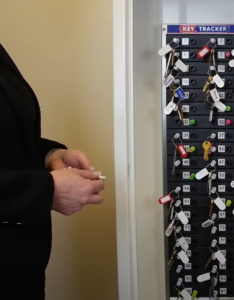 Accountability you can see
Accountability you can see
With any mechanical key management system, being able to see the keys right away helps you understand your situation:
- Current Key Status: Identification pegs on empty positions show which keys are in use and by whom
- Available Keys: Positions with keys but no identification pegs show that keys are available.
- Pattern Recognition: Regular checks can find keys that have been missing for a long time or patterns that are out of the ordinary.
- Shift Handovers: The board makes it easier to check things during shift changes by showing all key movements visually.
Added Security Features
Today’s mechanical key management systems have a lot more security features than just the basic peg-in, peg-out method:
- Tamper-proof seals: Security seals that show visual proof if someone tries to get in without permission.
- Secure cabinets: Lockable cabinets with high-security locks that protect the whole system.
- Anti-removal features: Mechanisms that stop keys from being taken out without following the right steps.
- Colour-coding Systems: Visual cues for different types of keys, departments or security levels
- Restricted Access: Cabinet locks that keep people from getting to the keyboard itself
Example of successful Mechanical Key Management Systems:
D.H. Price Motors used to have to keep track of more than 150 keys for cars in their sales and service departments. They put in a mechanical key management system to help them do this. The system used colour-coded key pegs to show the status of a vehicle: green for available, yellow for in service and red for sold and waiting for pickup. This visual system cut the time it took to find keys from 15 minutes to less than 2 minutes and almost completely eliminated the time customers had to wait to find their keys.
LIKE WHAT YOU ARE READING?
CONTACT OUR EXPERT TEAM TODAY
Call us on +44 (0)121 559 9000 or email: [email protected] and one of our expert team will be in touch to discuss your requirements.
3. Different kinds of mechanical key management systems
Different types of mechanical key management systems are available to meet the needs of different organisations, their security needs and their key inventories. When you know what your options are, it’s easier to choose the best one.
 Basic Key Cabinets
Basic Key Cabinets
Basic key cabinets are the easiest way to manage mechanical keys. They keep keys safe and don’t let you track them very well.
Core Features:
- Lockable cabinet with numbered hooks or slots
- Basic key tags or labels
- Simple logbook for manual recording
- Limited security features
- Minimal tracking capabilities
Best For:
- Small businesses with few keys
- Low, security environments
- Limited budget scenarios
- Situations with minimal key movement
Limitations:
- Relies heavily on user compliance
- Limited accountability features
- Minimal visual tracking
- No forced compliance mechanisms
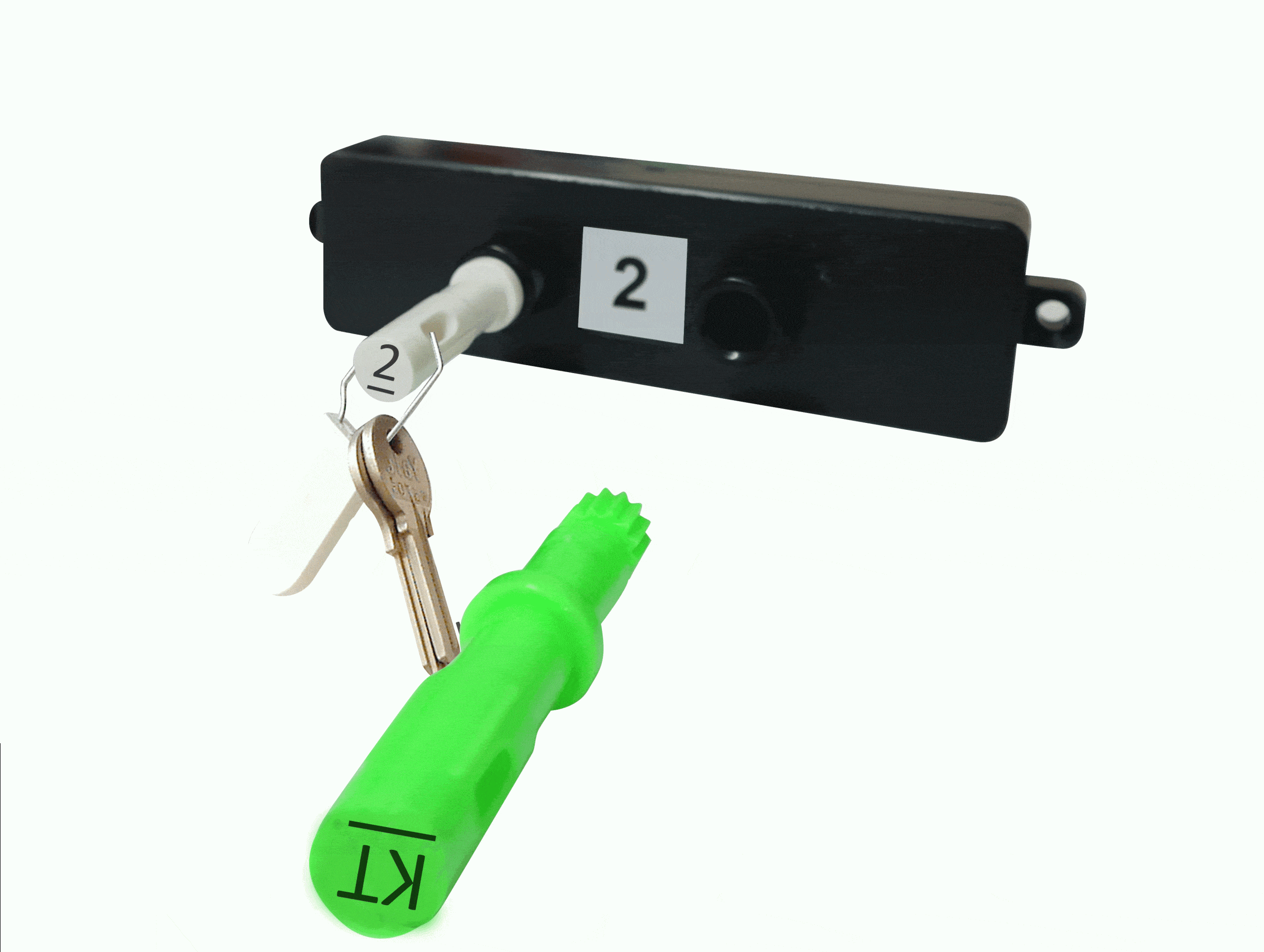 Peg, In/Peg, Out Boards
Peg, In/Peg, Out Boards
The traditional peg board system represents the most common mechanical key management approach:
Core Features:
- Visual board with numbered key positions
- User identification pegs
- Key tags corresponding to board positions
- Optional secure cabinet housing
- Manual or digital logging system
Best For:
- Small to large organisations
- Environments requiring visual verification
- Situations where simplicity is valued
- Operations with moderate key movement
Case Study:
Denton Travel implemented a peg, in/peg, out system to manage office and vehicle keys across their operation. The system used numbered pegs assigned to specific staff members, creating clear accountability for all keys. The implementation eliminated instances of lost keys and reduced morning delays as staff could immediately locate vehicle keys without searching through desks or asking colleagues.
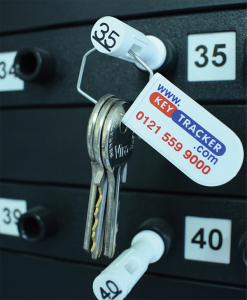 Capacity and Scaling Options
Capacity and Scaling Options
Mechanical key management systems come in various sizes to work for different company needs:
Small Systems (5 – 25 keys)
Small mechanical key management systems are ideal for:
- Small businesses with limited key sets
- Department, specific key management within larger organisations
- Secondary key storage locations
Features typically include
- Wall mountable designs with minimal space requirements
- Basic peg, in/peg, out functionality
- Essential tracking features
- Single, lock security
Medium Systems (25 – 50 keys)
Medium, capacity systems balance comprehensive management with reasonable space requirements:
- Suitable for medium, sized businesses
- Property management companies
- Automotive service departments
Features typically include:
- Expanded tracking capabilities
- Multiple user design
- Enhanced organisation features
- Wall mount
Large Systems (50 – 150+ keys)
Large mechanical systems provide robust management for substantial key inventories:
- Ideal for large facilities
- Multiple department management
- Automotive dealerships
- Property management firms
Features typically include:
- Cabinet enclosures with advanced security
- Multi, panel configurations
- Departmental segregation options
- Comprehensive logging systems
OUR PRODUCTS FOR YOU
4. Key Benefits and Security Features
Implementing a structured mechanical key management system delivers measurable benefits that extend far beyond simply knowing where your keys are. Based on data collected from our implementations across various sectors, here are some of the advantages organisations typically experience.
Enhanced Security and Accountability
Mechanical key management systems transform security posture in several measurable ways:
- Elimination of Unauthorised Access: Our clients report an average 89% reduction in unauthorised access incidents after implementation, as keys can only be removed by leaving an identification peg.
- Dramatic Reduction in Lost Keys: A survey of 50 KeyTracker clients showed an average 94% reduction in lost keys within 12 months of implementation, with 68% reporting zero lost keys after system deployment.
- Complete Accountability: The visual nature of peg, in/peg, out systems creates clear accountability for every key movement, with immediate identification of who has which keys.
- Immediate Status Verification: Systems allow instant verification of key status without requiring computer access or system login, with key location identified in seconds rather than minutes.
“After implementing KeyTracker’s mechanical system across our dealership, we’ve completely eliminated the security risks previously associated with misplaced vehicle keys. The visual accountability has transformed our customer service by eliminating delays related to key searches.” – Operations Manager, D.H Price Motors
Operational Efficiency Improvements
The operational benefits extend beyond security to fundamental business performance metrics:
- Dramatic Time Savings: Our automotive clients report average time savings of 82% when locating keys (from 15+ minutes to under 3 minutes), translating to recovered productive time worth approximately £8,400 annually per location.
- Administrative Reduction: Property management clients report a 76% decrease in administrative time spent on key, related tasks, allowing reallocation of staff to higher, value activities.
- Process Standardisation: Multi, site operations report significant benefits from standardised key handling procedures, with employee training time reduced by an average of 65% for new hires.
- Resource Optimisation: Visual key status helps organisations right, size their key inventory and identify inefficient resource allocation, with one facilities management client reducing their key inventory by 34% while improving access capabilities.
Reliability and Independence
Mechanical systems offer unique advantages related to their independence from technology:
- No Power Requirements: Complete independence from electricity makes mechanical systems ideal for: Remote locations without reliable power
- Emergency backup systems
- Outdoor or harsh environments
- Areas where power installation is costly or impractical
Reliability in All Conditions: Mechanical systems offer dependable operation:
- Function in extreme temperatures (-40°C to +70°C)
- Resistant to humidity and environmental factors
- No technical failures or software glitches
- Consistent performance regardless of external conditions
Simplicity of Operation: Mechanical systems feature:
- Intuitive operation requiring minimal training
- No technical skills needed for daily use
- Immediate visual verification of key status
- No passwords or access credentials to manage
Financial Impact
The financial case for mechanical key management is compelling, with return on investment typically achieved within months:
Direct Cost Reduction
Your organisation can expect substantial savings straight away, with mechanical key management systems typically delivering annual savings between £3,200 and £7,500 on replacement keys and locks alone. These figures vary depending on your organisation’s size and the complexity of your key systems, but the financial benefits become apparent quickly as lost keys and emergency locksmith calls become a thing of the past.
Labour Efficiency
The time savings are equally impressive, particularly when you consider how much staff time gets wasted hunting for missing keys or updating manual logs. A typical 50-key system recovers approximately 250 hours of staff time each year, which translates to over £3,000 in value at average wage rates. That’s time your team can spend on productive work rather than key-related frustrations.
Low Implementation Cost
Getting started won’t break the bank either, as mechanical systems typically cost 40-60% less than their electronic counterparts. You’ll also avoid the headaches of complex installation requirements and IT infrastructure needs, making implementation straightforward and budget-friendly from the outset.
Minimal Maintenance Expenses
Once your system is up and running, the ongoing costs remain refreshingly low. Mechanical systems don’t require software updates or technical maintenance, need only simple cleaning and occasional lubrication, rarely require component replacement and won’t demand IT support or specialised maintenance personnel. This keeps your total cost of ownership predictably low year after year
Long Service Life
Properly maintained mechanical systems typically last 15+ years, compared to 5, 7 years for electronic systems, providing excellent long, term value.
5. Implementation and Best Practices
Successfully implementing a mechanical key management system requires careful planning, effective change management and proper operational protocols. Based on our experience implementing hundreds of systems across the UK, these best practices will help ensure your implementation delivers maximum value.
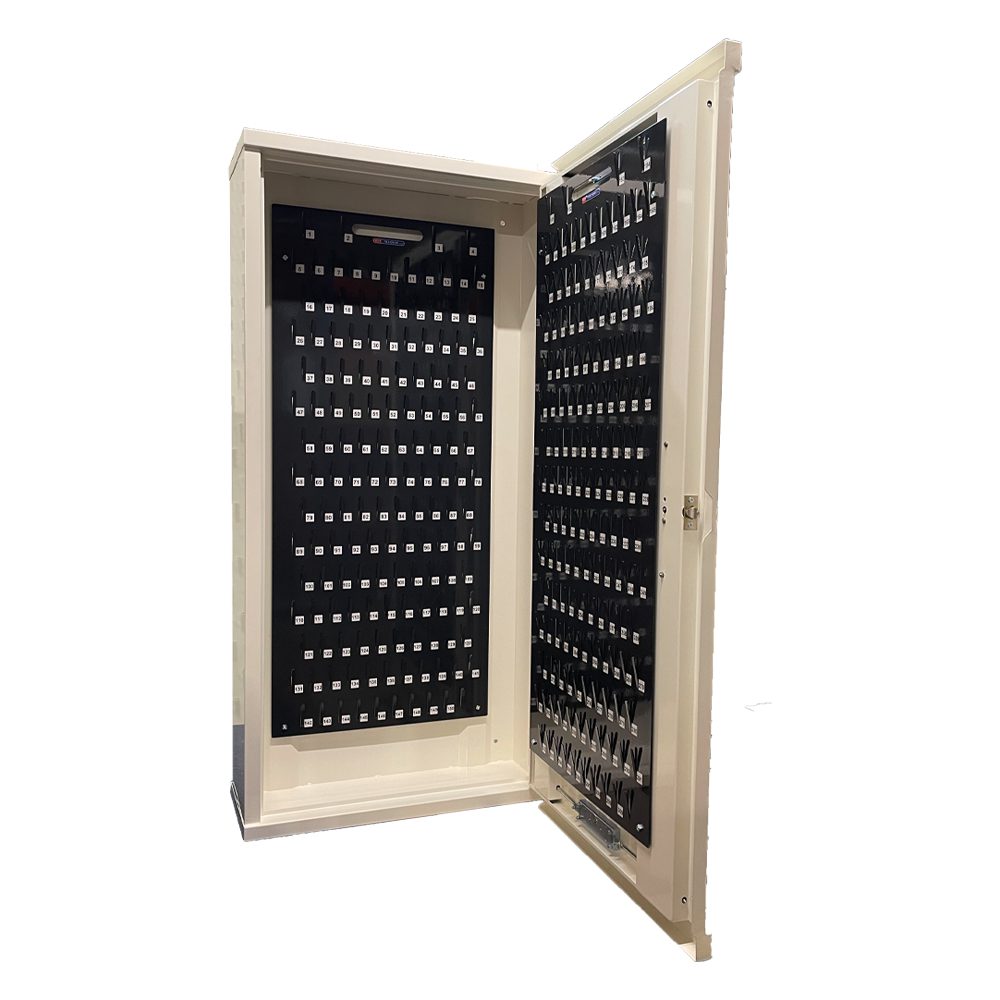 Pre, Implementation Planning
Pre, Implementation Planning
Thorough preparation lays the foundation for successful implementation:
Define Clear Objectives
- Document specific, measurable goals for the implementation
- Establish baseline metrics to compare against post, implementation
- Create a clear vision of what success looks like
Stakeholder Engagement
- Identify all departments and individuals affected by the new system
- Involve key stakeholders in requirements gathering and planning
- Address concerns and resistance early in the process
- Secure executive sponsorship for the initiative
Policy Development
- Create or update key management policies and procedures
- Define user roles, permissions and responsibilities
- Establish protocols for exceptions and emergency access
- Document compliance requirements and reporting procedures
System Configuration Planning
- Inventory all keys to be managed in the system
- Define user groups and access permissions
- Plan physical location and infrastructure requirements
- Develop naming conventions and organisational structure
Physical Installation Considerations
Proper physical installation is critical for system performance and security:
Location Selection
- Choose a secure, accessible location for board/cabinet installation
- Consider proximity to areas where keys are most frequently used
- Ensure adequate wall strength for mounting
- Verify sufficient lighting for visual verification
Infrastructure Requirements
- Appropriate mounting hardware for wall installation
- Sufficient space for user access and key management
- Proper height placement for visibility and accessibility
- Protection from environmental factors if necessary
Key Preparation
- Inventory all keys to be managed in the system
- Attach appropriate tags to keys
- Organise keys logically for board loading
- Document key identification and numbering scheme
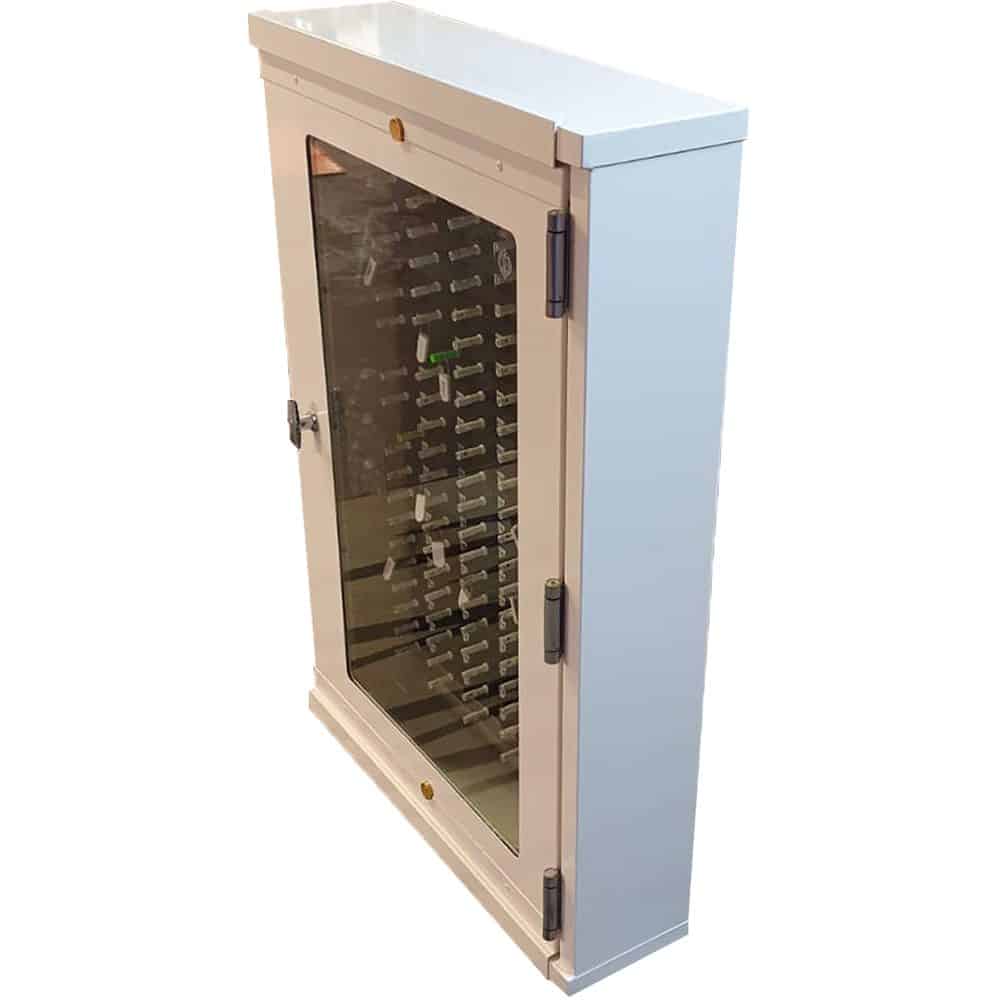 Operational Protocols
Operational Protocols
Establishing clear operational protocols ensures consistent system usage:
User Assignment
- Assign unique identification pegs to authorised users
- Document peg assignments and maintain master list
- Establish procedures for temporary users or visitors
- Create protocols for collecting pegs when authorisation changes
Usage Procedures
- Document step, by, step key checkout and return procedures
- Establish clear expectations for log sheet completion
- Define time limits for key possession if applicable
- Create escalation procedures for unreturned keys
Audit and Verification
- Establish regular audit schedule for key verification
- Document audit procedures and responsibilities
- Create reporting templates for audit findings
- Establish corrective action protocols for discrepancies
Training and Change Management
Effective training and change management are essential for user adoption:
Training Approach
- Develop role, specific training materials
- Conduct hands, on training sessions for all users
- Create quick reference guides for common tasks
- Provide administrator training for system management
Change Management
- Communicate benefits clearly to all stakeholders
- Address concerns and resistance proactively
- Identify and support internal champions
- Provide enhanced support during the transition period
Phased Implementation
- Consider piloting in one department before full rollout
- Implement in phases for multi, location deployments
- Allow time between phases to incorporate lessons learned
- Maintain parallel systems temporarily if needed
Maintenance and Optimisation
Regular maintenance ensures ongoing system effectiveness:
Routine Maintenance
- Regular cleaning of board and components
- Inspection of key tags and pegs for wear
- Verification of cabinet lock functionality
- Replacement of log sheets or books as needed
Periodic Review
- Evaluate system usage patterns
- Identify opportunities for improvement
- Update policies and procedures as needed
- Refresh training for users as required
System Expansion
- Plan for growth in key inventory
- Establish procedures for adding new keys
- Consider additional boards for departmental expansion
- Maintain consistent protocols across multiple boards
6. Industry Applications
Mechanical key management systems deliver tailored benefits across various sectors, addressing specific challenges with reliable, technology, independent solutions.
 Automotive Sector
Automotive Sector
Automotive dealerships and service centres face unique challenges managing large numbers of vehicle keys:
Key Challenges:
- Tracking hundreds of vehicle keys across sales and service
- Managing demo car access and test drives
- Controlling access to high, value vehicles
- Monitoring valet and service drive operations
- Efficient vehicle status tracking
Solution Applications:
- Colour, coded key tracking systems indicating vehicle status
- Salesperson is accountable for demo vehicles
- Visual board layout matching showroom or lot layout
- Departmental segregation between sales and service
- Specialised layouts for service department workflows
Case Study Highlight: D.H Price Motors
This dealership implemented a mechanical key management system with colour, coding to instantly show vehicle status, green for available, yellow for in service, red for sold, awaiting collection. The system reduced customer wait times by 71% and entirely eliminated the previously common issue of misplaced vehicle keys.
 Property Management
Property Management
Property management presents particular key management challenges with large portfolios of properties, multiple tenant needs and significant security implications.
Key Challenges:
- Managing hundreds or thousands of property keys
- Tracking access for maintenance staff, contractors and agents
- Ensuring tenant security and privacy
- Demonstrating duty of care in key handling
- Efficiently managing viewings and inspections
Solution Applications:
- Centralised management of all property keys with visual tracking
- Specialised peg colours for different staff roles
- Clear visual indication of keys currently in use
- Integration with property reference systems
- Controlled contractor access with temporary pegs
Case Study Highlight: Denton Travel
Managing multiple office locations and vehicle keys, Denton Travel implemented a mechanical key management system to control access and maintain accountability. The system used numbered pegs assigned to specific staff members, creating clear accountability for all keys. The implementation eliminated instances of lost keys and reduced morning delays as staff could immediately locate vehicle keys without searching.
 Retail and Hospitality
Retail and Hospitality
Retail and hospitality environments require secure key management for multiple areas and staff members:
Key Challenges:
- Managing access to stockrooms and secure areas
- Controlling keys for display cases and high, value merchandise
- Tracking master keys and restricted access areas
- Shift handover key management
- Temporary staff access control
Solution Applications:
- Shift, based key assignment with visual verification
- Department, specific key organisation
- Manager oversight of restricted keys
- Clear visual status of all operational keys
- Simplified audit for security compliance
Case Study Highlight: Xlusso
This high, end retail operation implemented an advanced mechanical key management system with tamper, evident seals and restricted cabinet access. The system managed keys for display cases containing valuable merchandise, with colour, coded pegs indicating different departments and security levels. The implementation provided complete key accountability while meeting insurance requirements for physical security.
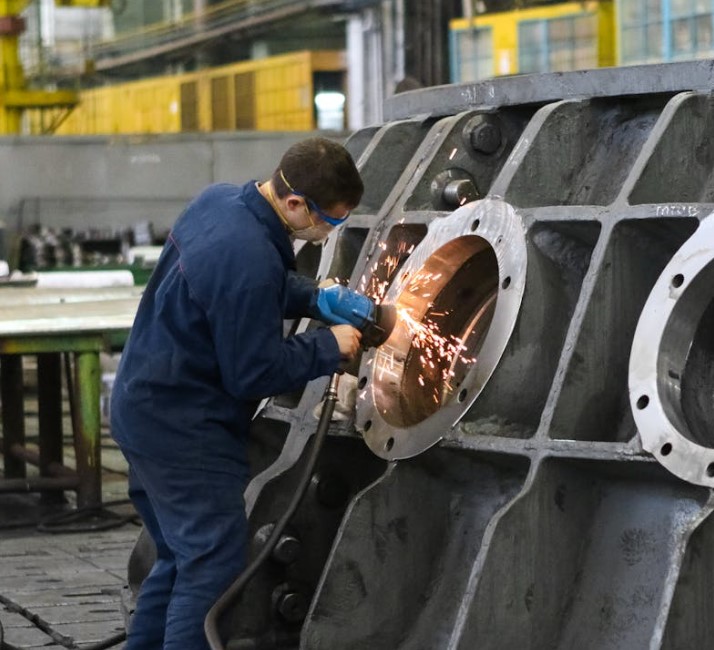 Manufacturing and Industrial
Manufacturing and Industrial
Manufacturing facilities manage complex key hierarchies for machinery, storage areas and restricted zones with significant safety implications.
Key Challenges:
- Controlling access to dangerous machinery and equipment
- Managing maintenance access to production, critical systems
- Securing valuable raw materials and finished goods
- Shift handover key management
- Contractor access control
Solution Applications:
- Safety, integrated key management for dangerous equipment
- Maintenance, specific access permissions and tracking
- Integration with lockout/tagout safety procedures
- Specialised storage for large or unusual keys
- Robust visual verification for security compliance
7. Frequently Asked Questions
A mechanical key management system is a physical organised way to keep track of, control and protect keys without using electricity or digital technology. Hanging keys on hooks or putting them in desk drawers are not safe or accountable ways to store them. Proper mechanical systems, on the other hand, use a systematic approach to storing and tracking keys.
The system usually includes a safe board or cabinet with set places for keys, identification pegs for each user and a way for users to trade their personal peg for a key. This makes it easy to see who has what key right away. UK businesses have trusted this simple but effective method for decades because it is both safe and easy to use.
Instead of electronic controls, mechanical key management systems use physical ones to keep things safe. They have strong locks on the cabinet itself and the keys inside are held in place until they are properly released with the peg system.
They don’t have electronic audit trails, but their visual nature makes it easy to see who has which keys right away. This level of physical security, along with the right management protocols, is enough protection for many situations. In fact, our data shows that 89% of clients report a big drop in unauthorised access incidents after implementation.
The main security benefit of mechanical systems is that they don’t depend on technical issues like power outages, network failures or hacking attempts.
Based on our experience installing them all over the UK, mechanical systems are especially good for:
- Businesses that don’t have reliable power or internet access: Places in the country, outside or with limited infrastructure
- Businesses with employees who have different levels of technical skill: Settings where ease of use and simplicity are important
- Running operations in tough weather: Places that are very hot, very humid or have other harsh conditions
- Organisations that are very concerned about security and need reliable backups: Even companies that use computers and other electronic systems sometimes use mechanical systems as backups.
- Small to medium-sized businesses with tight budgets: Companies that want strong security without spending a lot of money
We’ve successfully set up mechanical systems for a wide range of clients, from car dealerships in Cardiff to property management companies in Edinburgh and manufacturing plants in Birmingham. This shows that they can be used in many different fields.
One of the best things about mechanical systems is that they don’t need as much maintenance as electronic systems do. Routine care usually includes:
- Cleaning every once in a while: Dusting and cleaning the board and cabinet every so often
- Checking the parts: Looking for wear on the key tags and identification pegs (usually once a year)
- Lock lubrication: If necessary, applying the right lubricant to cabinet locks (usually once a year)
- Replacing log books: Giving out new log sheets or books as needed if people are still writing things down by hand
There is no need for software updates, battery changes or technical service, which means that the lifetime maintenance costs are very low. Many of our clients have mechanical systems that have been running for more than 15 years with little to no maintenance. This shows how long-lasting and reliable they are.
Identification pegs or tokens are given out to people who need to use mechanical systems. Only people with an authorised peg can trade it in for a key. To manage access well, you need to:
- Giving pegs only to people who are allowed to have them: Deciding who gets identification pegs
- Keeping a master list of peg assignments: Writing down which peg belongs to which staff member
- Getting pegs when permission changes:
- Using pegs of different colours for different levels of access: Access rights that are easy to see
- Putting in place management procedures for important sign-out rules: Setting clear rules
A lot of companies add extra controls to this basic approach. For instance, a chain of stores in London uses red pegs for department managers and blue pegs for general staff. This makes it easy to see who has access to what.
One of the best things about the system is that if a key is lost, the identification peg in its place will tell you who is in charge of it right away. This clear responsibility often leads to people being more careful with their keys and losing them much less often.
If a peg goes missing, it should be noted and a new one with a different identifier should be given to keep the system running smoothly. Some advanced mechanical systems have features that show when someone tries to remove a peg without permission, adding another layer of security.
After using mechanical key management systems, our clients say they lose 94% fewer keys on average.
Yes, a lot of mechanical key management systems can be added to and changed. You can add more panels or boards to your base system as your key inventory grows.
You can set up our mechanical systems to meet your current needs and you can add more parts later on without having to replace the whole system. For instance, a property management client in Leeds started with a 50-key system and has added to it three times over the course of five years as their portfolio of properties grew. They now manage more than 200 keys on a system of connected boards.
When you first set up your system, we suggest giving yourself 15-25% more capacity than you need right now so that you can grow normally without having to expand right away.
There are pros and cons to both mechanical and electronic key management systems that make them better for different types of businesses:
| Aspect | Mechanical Systems | Electronic Systems |
|---|---|---|
| Power Requirements | None, operate without electricity | Require continuous power with battery backup |
| Initial Cost | Lower (typically 40-60% less) | Higher initial investment |
| Maintenance | Minimal, occasional cleaning and inspection | Regular, software updates, battery replacement, technical service |
| User Authentication | Visual identification via pegs | PINs, cards or biometric verification |
| Audit Trail | Basic visual tracking and optional manual logs | Comprehensive digital logs with timestamps |
| Remote Monitoring | Not available | Real-time monitoring and alerts |
| Environmental Durability | Excellent, functions in extreme conditions | Limited by electronic components |
| Lifespan | 15+ years with minimal maintenance | 5-7 years before technological obsolescence |
| User Learning Curve | Very low, intuitive operation | Moderate, requires some training |
A lot of businesses use a mix of mechanical and electronic systems. They use mechanical systems for backup or in certain places and electronic systems where their advanced features are most useful.
When it comes to money, mechanical key management makes a lot of sense because the return on investment usually happens in months, not years. According to data from our UK implementations, companies go through:
- Direct Cost Reduction: You can save between £3,200 and £7,500 a year on new keys and locks.
- Labour Efficiency: Getting back about 250 hours of staff time each year that would have been spent looking for keys (worth £3,750+ at average UK wage rates)
- Low Cost of Implementation: 40-60% less than electronic options and installation is easy
- Low Ongoing Costs: No costs for licenses, software updates or technical support. The service life is 15 years or more, compared to 5 to 7 years for electronic systems.
Setting up mechanical key management systems is easy and quick compared to electronic ones:
- Small systems (up to 50 keys): Usually 1-2 weeks from order to full operation
- Medium systems (50-100 keys): Usually 2-3 weeks, including preparation and setup
- Large or custom systems: 3-5 weeks, depending on how complicated they are and how much they need to be customised.
The steps in the implementation process are:
- Choosing and setting up the system
- Delivery and installation, which usually only takes a few hours
- Getting the keys ready and loading them
- Training for staff (which usually takes 30 to 60 minutes per person)
- Making and writing down policies
Understanding your specific needs and problems is the first step on the road to better key management. To get started, we suggest these steps:
- Do a key audit: Write down all the keys that are currently in use, what they are used for and who uses them.
- Find the pain points: Find out what specific problems your current method has
- Set goals: Set clear goals for your key management system
- Think about what you’ll need in the future: Take into account possible growth in important stock
- Look into your options: Look over different setups for mechanical systems
Our key management experts will meet with you for free to talk about your specific needs and problems, with no obligation. These sessions help you understand your options better and get expert advice based on your specific situation.
TESTIMONIALS
“The main reason for implementing a KeyTracker system into the business was for a fast and efficient service. The best thing about the system is that it’s quick, efficient, and of high quality. It also generates a fast response time and provides great customer service and quality. The business journey with KeyTracker from discovery to installation to aftersales has been amazing. To any potential customers, go ahead. It will help enhance business for sure.” Seiawsh Kakar, Foxtons (Property)
“The biggest difference we have noticed is that nobody needs to manage the keys anymore, previously someone would have to hand the keys out or we wouldn’t know who had taken them, now we can glance at the KeyTracker system and instantly see who has it. It’s saved so much time already.” Gaye Poole, Office Manager, First Choice Cleaning & Maintenance Services. (Facilities Management)
“Some benefits of the KeyTracker’s system are having access to staff keys, in case of an emergency, Staff knowing that their keys are safe and can’t be lost during shift and a reduced cost of vehicles being put off-shift if keys are not present. KeyTracker are absolutely amazing, professional, personal and exactly as advertised!” Station Manager, All Wales Ambulance Service. (Station Manager)
“Our business journey with KeyTracker from discovery to installation and aftersales was flawless. The KeyTracker system has removed individuals’ choice, increased Team Leaders responsibility, removed H&S concerns of MHE misuse. It’s an effective key control measure”. Yusen Logistics.
“The system makes things a lot more organised, and process driven as we can control it. It is used by our 50+ staff and KeyTracker has improved our day-to-day operations as it is great quality, excellent service and has a great range of products. The best thing about KeyTracker are the lovely people we have arranging our orders.” Manager, Arden Maidstone BMW. (Franchise)